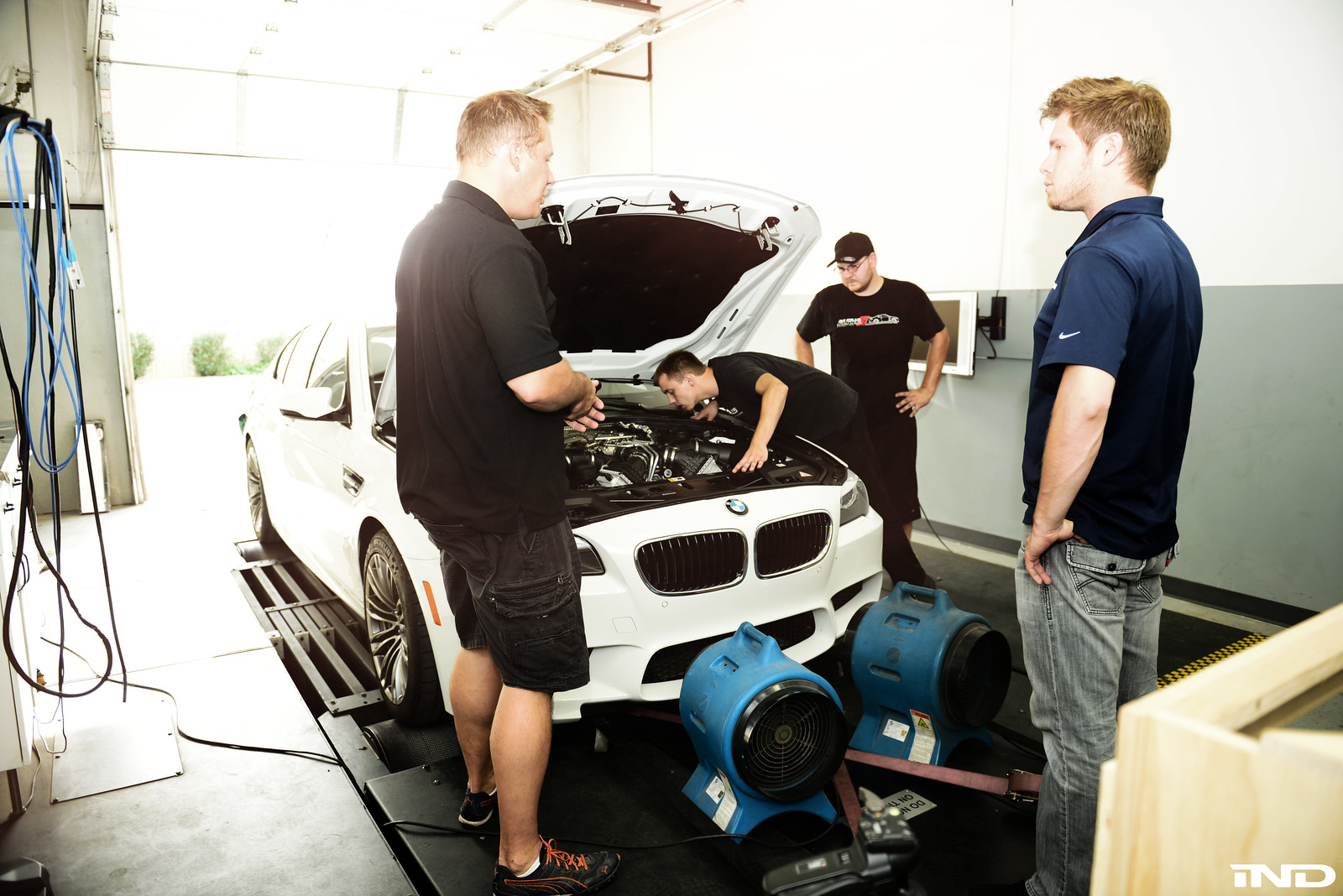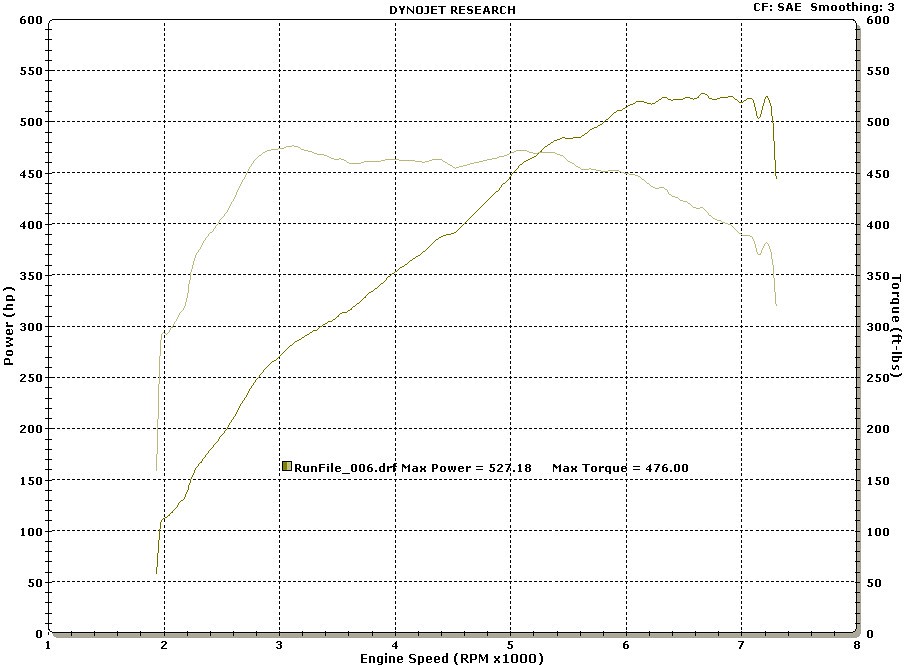When Horsepower or Torque are quoted for a car, you have to be careful what it is that is being quoted.
Because of power losses between the cylinders spinning the crankshaft and the wheels, power is going to be different depending on where you measure it and how you measure it.
One method of measuring the power at the wheels is by using a wheel dynamometer. This is what tuners do to see how effective their performance upgrades are. The fully assembled car is placed is such a way that the rear wheels spin a cylinder of a given mass. From the cylinder’s acceleration, the torque can be measured and the power derived. This is called wheel horsepower.
Here are some fellows from iND Tuning putting a brand new stock F10 M5 on a wheel dyno in order to get a baseline to see if the new bits and pieces they will install do what they hope them to. Their results are as follows.
This graph shows peak engine Horsepower as measured at the wheels to be 527 HP. This is shy of BMW's stated claim of 560 HP. Is BMW cheating us? Far from it. This is wheel horsepower Wheel horsepower is usually down by at least 13% from crank horsepower, which is what manufacturers quote. So if there really is a 13% loss before it gets to the wheels, that means the engine must be pushing out peak horsepower of 605 HP and peak torque of 547 ft-lb at the crank! Similar results have been reproduced by others, and this is fairly consistent across BMW's new turbocharged engines. We don't know why BMW is understating power...
The way car manufacturers have all agreed to quote their numbers is by using the SAE (Society for Automobile Engineering) standard J1349 which specifies a method of measurements called SAE Net, and that they have a certified SAE person standing by, overseeing the test, and signing off on the results. They are not allowed to report anything more than this, but evidently can report less.
SAE Net is where the engine is removed from the car, and completely detached from its transmission. The standard requires that the car’s actual air filter and muffler be attached. Without these, it is called SAE Gross. Also attached and draining power is whatever else is required to make the engine run (for example, oil pump, coolant pump, alternator, and so on). The torque is then measured at the crankshaft.
The photo above shows the BMW E60 M5 engine being dyno tested by the tuner Dinan. It is going full out, so its exhaust headers are glowing purple with the heat!
This method of measuring results in what is called Crank Horespower, Shaft Horsepower, or Brake Horsepower, because the device used to measure the torque at the crank is based on an invention by Gaspard de Prony in 1821 called the de Prony Brake. The device that measures the power is called an Engine Dyno as opposed to the Wheel Dyno we discussed first.
What causes the difference between crank and wheel horsepower are power losses in the transmission. Anything along that path that bends, generates heat, or makes noise is sucking power. So do the tires themselves deform, heat up, and make squealing noise, sucking power before the road sees it.



No comments:
Post a Comment